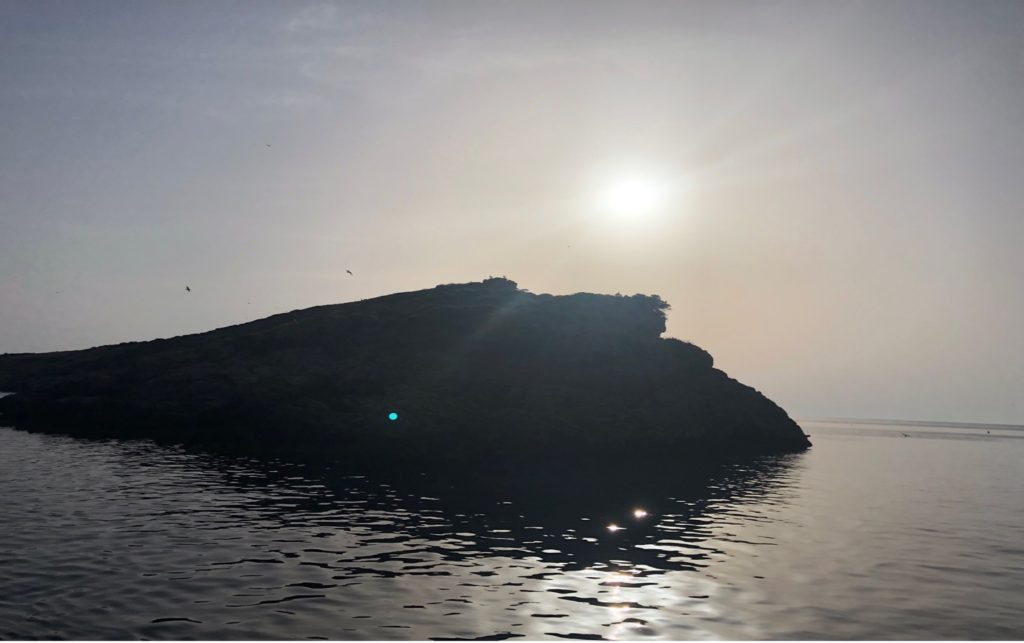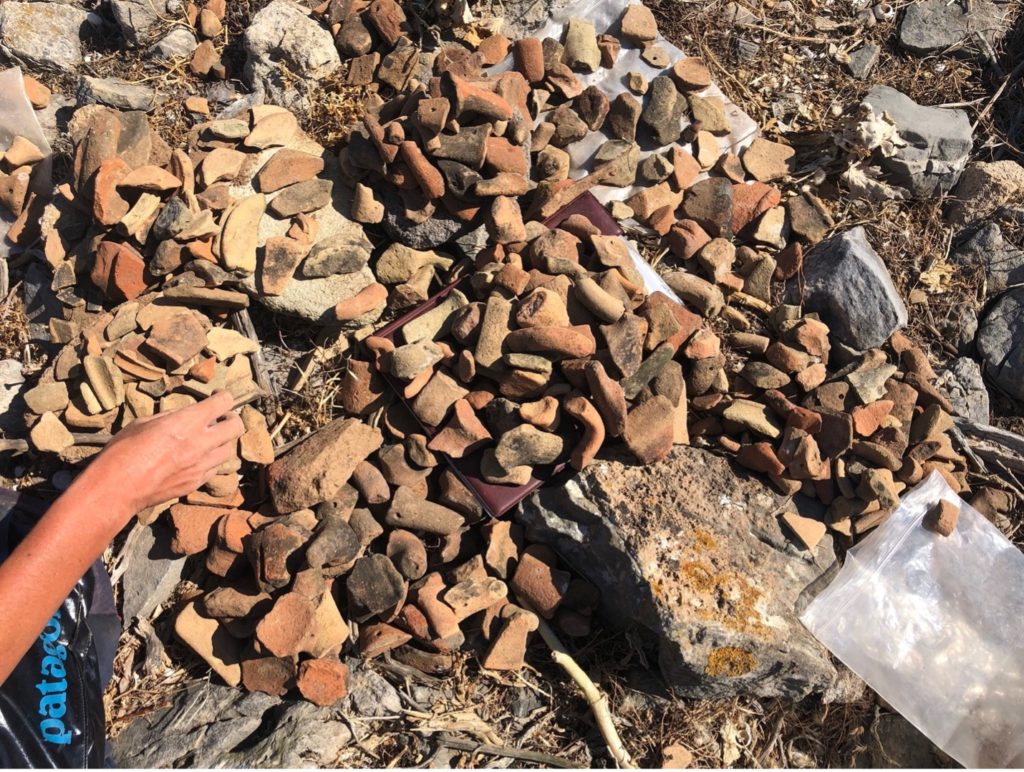For those of you still loyally following the blog, Kat Apokatanidis has written this post about the BEARS 2022 team’s maiden voyage to Koroni Islet. Enjoy!

The sea is nearly perfectly still, painted like molten silver or gold as the early morning sun peeks over the eastern horizon. The heat of the day is already thick in the air, visible and stifling even at seven in the morning. The BEARS team is gently rocked from side to side as captain Vasilis navigates the waters of the bay. Today we are headed to a new island, one which we have not yet surveyed. Situated just off the eastern coast of Koroni, an acropolis/fortress with which we are all too familiar by now, Koroni Island is a small patch of rocky land, its two gentle yet expansive hills its main identifying feature. The island’s eastern cliffs are small yet dramatic, giving the impression that its south-east coast has been cut all the way to the bottom of the sea. No wonder; this side of the island is the one to take the brunt of the Aegean’s relentless briny winds and land-eating waves. This feature of the landscape, despite its brutal origins, inspires our captain to bring his sailing boat, the intrepid Aphrodite, all the way to the very edge of the landmass so that we may disembark. The usual way would be to use the dingy but today our resident experienced Man of the Sea has other plans. With his expert maneuvering we arrive safely and begin our exploration.
Although we detect modern human activity almost immediately, the search for ancient activity drives us through the island’s dense maquis and sloping bedrock. Some seagulls fly above head, noting our presence wearily, but these resident faunae are more polite than those of Raftopoula, Praso, or even Raftis; they do not dive out of the sky intent on pecking our eyes out as, thankfully for us, Koroni Island is not their main nesting ground. And so, we are allowed to continue surveying this islet, though admittedly it does not yield a hefty bounty. And although the exploration itself is exciting, the heat of the summer day starts to become unbearable as the hours go by and the island’s terrain requires more effort to traverse. However, as with all other islands, the light southern breeze blowing from time to time makes things slightly better. And even though the island yields little evidence of ancient activity, it is enough to send us off with the same questions we have been asking of all the other places under our survey; why would anyone choose to live here?

